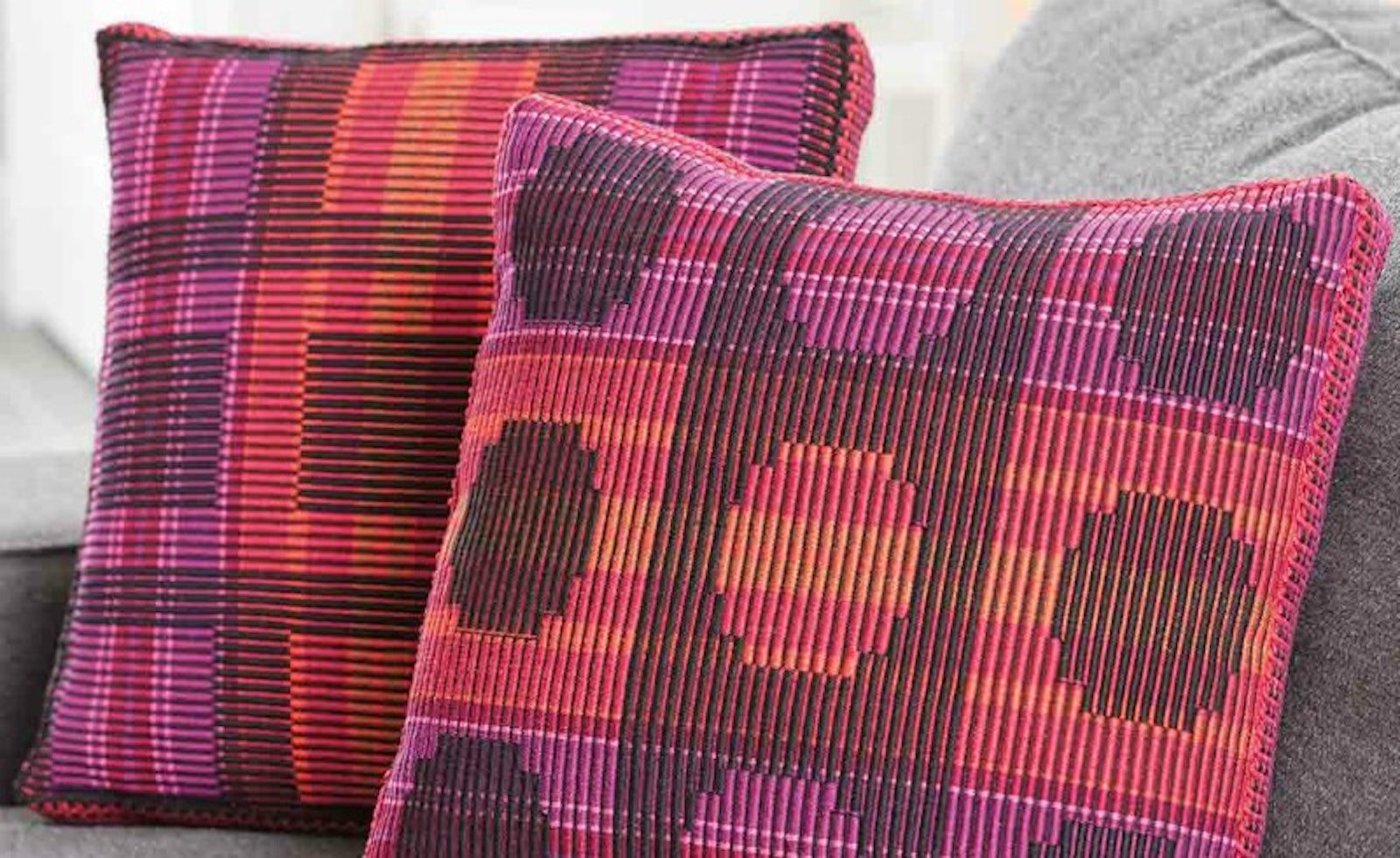Weavers and nonweavers alike often comment about the intrigue and beauty of the tools used for weaving. It’s true: weaving has some of the best equipment of any craft, all the way from a beautifully finished stick shuttle to a multishaft loom. Check out Handwoven September/October 2017 to see wonderful ways of using them. As a bonus to readers, the issue includes a Loom Buyers guide to help you find your next loom.
In the magazine, we celebrate the loom in its many forms and styles from the most basic backstrap and frame looms to complex computer-driven dobby looms. We asked some of our favorite weavers to weave projects that put different types of looms through their paces, drawing on the looms’ strengths.
To highlight the capabilities of simpler looms, we have Esther Rodgers’s No-Sew Hat woven on a rigid-heddle loom using stash yarns for weft, Sarah Neubert’s tapestry bracelet woven on a frame loom, and Laverne Waddington’s Andean Bands woven on a backstrap loom. Deborah Jarchow’s Design for Two Looms scarf bridges the gap between rigid-heddle looms and harness looms. She challenged herself to weave two scarves that are identical except for the looms they were woven on.
Suzie Liles wove her Simply Swedish Shawl in Swedish lace using Swedish yarn on a Swedish four-harness jack loom. Laura Fry used her four-shaft counterbalance loom to weave ten (!) Summerberry Towels with the goal of showing how weaving a length of plain weave is the best way to learn how to handle a long warp, standardize your beat, and play with different wefts. Elisabeth Hill wove two versions of her pillow covers, one on four shafts and one on eight shafts, and finished the pillows with matching inkle bands.

Detail of Elisabeth Hill's pillow covers, found in Handwoven September/October 2017.
Tracy Kaestner played with weft colors and block sizes in four twill towels woven on an eight-harness jack loom with a sinking shed rather than the usual rising shed. Finally, my three shadow-weave towels show how using a computer-assisted dobby loom can make treadling easier, even if it isn’t actually necessary.
You’ll also learn from Deb Essen about how to choose the best loom for your needs and from Tom Knisely about how the variety of looms have changed over the years, and Daryl Lancaster takes you through the history of the small but mighty Structo loom. Last but not least, you can read about how Deanna Deeds wove the gorgeous Yarn Lab samples displayed on the cover.
As weavers, we do have the coolest equipment and tools, not the least of which are our looms, as shown in the projects and articles of this issue.
Weave well,
Susan

